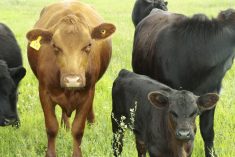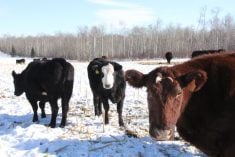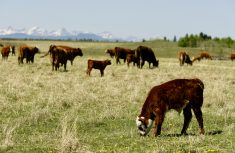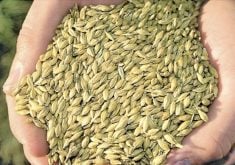Many of you are likely aware that the feed industry is facing a critical shortage of vitamins A and E. This shortage is the result of a fire in October at a processing plant in Germany owned by BASF, one of the global leaders in the provision of vitamins for humans and livestock. The damaged plant produces a compound called “Citral” which is a critical intermediate in the process used by BASF to produce both vitamin A and E. At the time of writing, this plant was out of production and according to industry sources, not expected to open anytime in the near future.
Read Also

Body condition, nutrition and vaccination for brood cows
One of the remarkable events of the past century related to ranching has been the genetic evolution of brood cows….
As a result, vitamin prices have risen sharply and many feed companies have advised their clients that levels of vitamin A and E in mineral and protein supplements need to be reduced. The Canadian Food Inspection Agency has in fact implemented an interim compliance policy for registered feeds containing vitamins A and E that allows feed companies to temporarily reduce their concentration in such feeds, as long as they fall within the requirements of the federal feed regulations. In addition to feed sources, injectable ADE products, as well as that of selenium and vitamin E, are in extremely short supply.
This “crisis” has several implications for producers. Obviously, rising vitamin prices will lead to increased feed costs. As an example, under current pricing, a large feedlot could spend an extra $2,500 to $3,500 a month on these vitamins, depending on inclusion levels. More importantly, without careful attention to ration formulation, situations could arise where a deficiency develops in one or more of these vitamins, with resulting impacts on productivity, reproduction and health.
I have written in past columns (March 2014 and January 2017) on the function of these vitamins and will not go into detail here. However, it is important to realize that both vitamin A and E are essential nutrients for cattle and must be supplied to the animal. Briefly, vitamin A is important for vision, reproduction and immune function, while vitamin E is an antioxidant that interacts with selenium to provide protection to tissues and is also involved with immune function. Both vitamin A and E along with D, are soluble in fats and oils. This characteristic is important as the animal can store these vitamins in adipose tissue and the liver. This leads to flexibility in how we supply these vitamins. For example we can feed appropriate amounts daily, weekly or evenly monthly, or inject a two- to three-month supply and the animal will store excess levels and draw on these stores as required.
Keeping this storage ability in mind, let’s look at how concerned we should be with respect to this issue. The first point I would make is that if you have been feeding/injecting these vitamins on a regular basis, it is highly likely your cattle have a reserve of both vitamins stored in liver/fat tissue. If necessary, this reserve can be used by the animal to supplement reduced levels in the feed. So in the short term, if you have been diligent up to this point, you should not see any deficiency issues if your feed company has to temporarily reduce levels of these vitamins in your mineral or supplement. In the longer term, issues may develop. However, remember we are only 90 days or so away from green grass which is nature’s vitamin factory. Lush, spring forage is a good source of vitamins A and E, particularly as the growing season progresses.
My biggest concern will be with cow-calf producers who, due to the particulars of their operation (i.e. soils deficient in selenium), rely on injections of vitamin E and selenium to prevent white muscle disease and/or retained placentas. If supply of these products remains an issue, producers who use this method of providing vitamin E may be out of luck. If this sounds familiar to you, now would be a good time to evaluate your mineral feeding program and ensure that you are providing sufficient selenium and vitamin E to meet requirements, even if you have to pay more for that mineral. The consequences of a deficiency are just too great to do otherwise.
The biggest issue facing cattle feeding operations is likely the shortage and pricing of vitamin E. Its role in immune function is important for newly weaned and/or stressed calves. I like to see such calves get 500 IU per head per day during periods of stress. With today’s pricing, this has significant cost implications as I discussed above. Fortunately, the 2017 fall calf run is well behind us and hopefully the situation is resolved by the time we see 2018 calves.
With respect to vitamin A, the requirement for growing/finishing cattle as laid out in the Nutrient Requirement for Beef Cattle Publication is 2,200 International Units (IU) per kilogram of DM. If there is a continuing supply issue, feeding reduced levels is not a major issue, as there is a considerable body of research with feedlot cattle, particularly those later in the feeding period, that shows that lower levels of vitamin A can be fed without any negative consequences on health or performance. How low you can go, is a good question for your nutritionist!

















